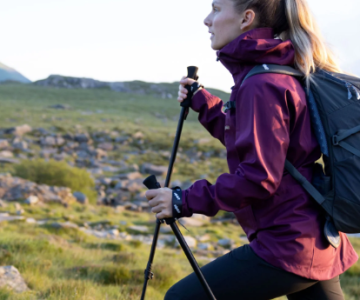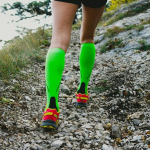You’ve been running for a while, and now you’re ready to take on your first trail race. But with so many unknowns, you might be wondering how to prepare. Whether it’s a half-marathon or a shorter distance, this guide will walk you through everything you need to know to set yourself up for success.
Choosing the Right Event
The key to a great first trail race is selecting one that is challenging yet manageable. You want to push yourself, but you don’t want to overwhelm yourself. It’s important to remember that trail races vary in difficulty, even when they are the same distance. Take a look at the race profile, especially the elevation gain, to determine how demanding the course will be. For instance, you might choose a longer race with gradual climbs or a shorter race with more elevation. Knowing the course ahead of time will help you mentally prepare for any big challenges like steep climbs.
Start Close to Home
For your first trail race, it’s a good idea to choose a local event. A nearby race will have terrain similar to your usual training routes, and it will give you a better idea of the race day conditions. Local races are often smaller and more relaxed, providing a great atmosphere for first-timers to enjoy the experience without the stress of large crowds.
Training: Building a Strong Foundation
Training for your first trail race depends on your current fitness level and race goals. The more distance you aim to cover, the more time you’ll need to train. Whether you’re running a 10K or half marathon, logging the miles is essential.
Log the Miles
Long runs should be the backbone of your training. If you’re preparing for your longest distance yet, your weekly mileage should gradually increase until you can handle the race distance comfortably. Make sure to incorporate the terrain and elevation of the race into your training, especially if you’re tackling hills. Aim to increase your longest run to about 90% of your race distance. For example, if you’re running a half marathon, your longest training run should be around 18–19 km.
Practice Race Pace
Race pace isn’t just about speed—it’s about exertion. On a trail, your pace will vary based on the terrain, so it’s important to practice maintaining a consistent effort rather than focusing solely on your pace per kilometer. For uphill sections, try hiking instead of running to conserve energy. Training your body to understand and manage your effort on the trail will ensure you don’t burn out early.
Focus on Technique
Good technique can make all the difference when it comes to trail running. Keep your strides short and light, and aim to land with a midfoot strike to avoid unnecessary stress on your knees. This will also help you navigate uneven terrain more efficiently and maintain your balance.
Strength Training
While distance runs should be your focus, adding some strength training to your routine can help you build endurance and prevent injury. Trail runners particularly benefit from single-leg exercises, plyometrics, and core work that targets rotational stability. Just two 30-40 minute sessions per week can yield noticeable improvements.
Additional Preparation
Once you’ve committed to a race, it’s time to dive into the specifics. Understanding the course and conditions will help you make decisions about gear, nutrition, and race strategy.
Wear the Right Clothing
Your clothing should match the weather conditions. For warmer temperatures, light, breathable gear like running shorts and a moisture-wicking shirt is ideal. For cooler weather, you may need additional layers. Experiment with different outfits during training runs so you don’t encounter any surprises on race day. Remember to pack sunglasses and a hat, and if it’s cold, gloves can be a lifesaver.
Carry the Right Gear
While a short race might not require extra gear, longer or more remote races often do. Be sure to check the race rules to see what gear is mandatory. A light jacket or warm layer is always a good idea, even for races in the summer, especially if elevation changes are involved. For longer races, you might need to carry items like sunscreen, a blister kit, electrolyte tablets, and gels for energy. A small pack (10–14 liters) is a good size for carrying all your essentials.
Use Worn-In Shoes
Never race in new shoes. Blisters are much more likely to occur if you run in shoes that haven’t been broken in. Make sure you train in the shoes you plan to wear on race day to avoid any discomfort or surprises. If your current pair is nearing the end of its lifespan, start breaking in a new pair a few weeks before the race. This will ensure both pairs are ready for action when race day arrives.
Have a Hydration and Nutrition Plan
For races lasting longer than 90 minutes, hydration and refueling are crucial. On runs of up to 4 hours, you can rely on gels or easily digestible snacks to keep your energy up. Pay attention to your hydration needs as well—especially in hot weather, when you may need up to 800 ml of water per hour. Carry enough water if aid stations are sparse, and don’t forget to replace lost electrolytes with tablets or drinks designed for this purpose.
Understand the Course
Before the race, study the course profile and note where the toughest sections are. Knowing the big climbs or tricky descents will help you pace yourself and adjust your strategy accordingly. It’s often best to conserve energy early in the race and push harder only when you’re nearing the finish line.
Race Day Tips
As race day approaches, make sure to apply anti-chafe lotion to vulnerable areas, such as your inner thighs and underarm areas. Hydrate properly before the race, but don’t overdo it. Overhydrating can dilute your sodium levels, leading to a condition known as hyponatremia. Sipping on an electrolyte solution before the race will help prevent this.
Stick to Your Plan
It’s easy to get caught up in the excitement of race day and push yourself too hard, but it’s important to stick to your pace. Try to start the race at a conservative pace, especially during the first half. If you’ve paced yourself well, you’ll have plenty of energy to surge during the final kilometers. Starting too fast can lead to burnout, so give yourself the space to overtake runners later on if you need to.
Enjoy the Experience
With all the preparation behind you, the final step is simply to enjoy the race. Trust the training you’ve put in, follow your plan, and take in the beauty of the trail. Whether you’re aiming for a personal best or just want to finish, remember that completing your first trail race is a significant achievement.





